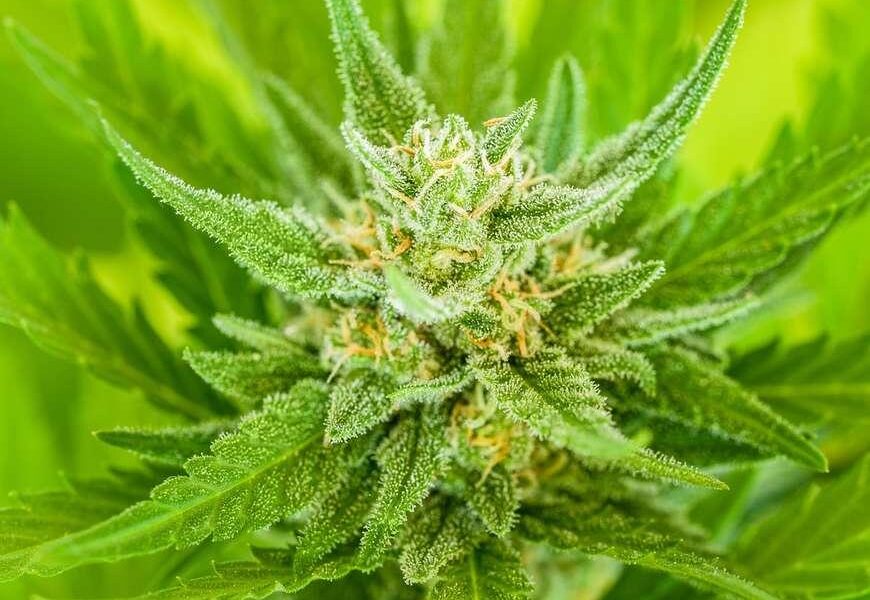In the vast landscape of modern cannabis culture, few acronyms have become as pivotal as THC. To the uninitiated, it may simply evoke curiosity, yet for many, it encapsulates the very essence of the plant’s allure. Tetrahydrocannabinol, more commonly known as THC, is the compound responsible for the intoxicating effects associated with marijuana. But its significance extends far beyond the realm of recreational use; THC’s interaction with the human body offers a window into the intricate world of cannabinoids, their medicinal potential, and the evolving legal landscapes they navigate. In this article, we aim to demystify THC, exploring its definitions, functions, and the myriad implications it has for users, researchers, and policymakers alike. Join us as we delve into the science behind this fascinating molecule, unraveling the complexities that define THC in today’s society.
Table of Contents
- Understanding THC: A Comprehensive Overview of Tetrahydrocannabinol
- The Science of THC: How It Interacts with the Body and Mind
- Exploring the Therapeutic Uses of THC: Benefits and Considerations
- Navigating Legalities and Regulations Surrounding THC Use
- Q&A
- Concluding Remarks
Understanding THC: A Comprehensive Overview of Tetrahydrocannabinol
Tetrahydrocannabinol, commonly known as THC, is the primary psychoactive compound found in the cannabis plant. *THC binds to cannabinoid receptors in the brain, leading to a variety of effects, including alterations in mood, perception, and cognition. This compound is responsible for the “high” associated with marijuana use. Beyond its recreational use, THC has been researched for its medical benefits, particularly in pain management, appetite stimulation, and nausea reduction. Some of the most intriguing aspects of THC include its interaction with other cannabinoids and terpenes, which can enhance or modulate its effects in what is known as the ”entourage effect.”
Understanding the various aspects of THC can provide valuable insights into its broader implications. Here are some key points to consider:
- Chemical Structure: THC is a cannabinoid with a unique molecular structure that contributes to its interaction with receptors.
- Consumption Methods: THC can be consumed in multiple forms, including smoking, edibles, and oils, each affecting the onset and duration of its impact.
- Legality: The legal status of THC varies widely across regions, affecting its availability and usage for both recreational and medical purposes.
The Science of THC: How It Interacts with the Body and Mind
Tetrahydrocannabinol, commonly known as THC, is a cannabinoid that primarily interacts with the body’s endocannabinoid system (ECS). This system plays a crucial role in maintaining homeostasis, regulating various physiological processes, including pain, mood, and appetite. When THC enters the bloodstream, it binds to cannabinoid receptors, particularly CB1 receptors found primarily in the brain and nervous system. This interaction triggers a range of effects, which can include euphoria, altered sensory perception, and a relaxation response. Some of these effects arise from THC’s ability to enhance the release of certain neurotransmitters, such as dopamine, which can affect mood and reward pathways.
Moreover, THC’s influence isn’t limited to the brain; it also impacts the rest of the body. By interacting with CB2 receptors located throughout the immune system and peripheral tissues, THC may exhibit anti-inflammatory properties and modulate pain responses. This is particularly relevant for individuals dealing with chronic conditions, as it may provide relief where traditional medications fall short. Here’s a quick overview of THC’s primary effects:
| Effect | Impact |
|---|---|
| Altered Perception | Changes in sensory experiences and time perception |
| Increased Appetite | Commonly referred to as “the munchies” |
| Pain Relief | Potential reduction in chronic pain levels |
| Relaxation | Reduction in anxiety and stress |
Exploring the Therapeutic Uses of THC: Benefits and Considerations
THC, or tetrahydrocannabinol, is one of the primary cannabinoids found in the cannabis plant, renowned for its psychoactive properties. However, the therapeutic applications of THC extend well beyond recreational use, offering a variety of potential health benefits. It has been found to aid in the management of chronic pain, making it a viable option for individuals suffering from conditions such as arthritis or fibromyalgia. Additionally, research indicates that THC can stimulate appetite, which is particularly beneficial for patients undergoing treatments like chemotherapy that often lead to nausea and loss of appetite. Some key benefits include:
- Pain relief: Helps alleviate chronic pain and inflammation.
- Appetite stimulation: Effective in treating appetite loss.
- Reduction of anxiety: May help manage anxiety and depression in certain individuals.
- Sleep aid: Can improve sleep quality and mitigate insomnia.
While the therapeutic uses of THC are promising, it’s crucial to consider potential side effects and individual differences in response to cannabis. Not everyone may experience the same effects, and for some, THC can lead to increased anxiety or paranoia. Moreover, the method of consumption—whether smoking, vaporizing, or edibles—plays a significant role in how THC affects the body. Research is ongoing to fully understand the benefits and risks associated with THC use, which underscores the importance of consulting healthcare professionals before starting any cannabinoid-based treatment. Here are some considerations to keep in mind:
| Consideration | Details |
|---|---|
| Dosage | Start low and go slow to find the right amount for individual needs. |
| Consumption method | Effects can vary significantly based on the method of intake. |
| Legal status | Check local laws regarding the use of THC for medicinal purposes. |
| Personal health | Consider existing medical conditions and possible drug interactions. |
Navigating Legalities and Regulations Surrounding THC Use
Understanding the landscape of THC use requires a deep dive into the various legal frameworks that govern its consumption. State laws can vary significantly, with some allowing recreational use, while others permit only medical consumption. It’s essential to recognize that even within states that have legalized THC, there are restrictive measures in place, such as age limits, where it can be consumed, and under what circumstances. Users must also be aware that federal law still classifies THC as a Schedule I substance, which presents potential complications, especially regarding issues like transportation and possession across state lines.
Moreover, individuals should stay informed about local regulations that could affect their ability to access THC legally. This can include zoning laws that dictate where dispensaries can operate or restrictions on advertising related to THC products. Some key points to consider include:
- Licensing Requirements: Knowing whether dispensaries are licensed and compliant with state laws.
- Public Consumption: Understanding where THC use is allowed in public settings.
- Home Cultivation: Being aware of the legal limits on growing THC plants for personal use.
The legal environment is continually evolving, which makes it crucial for users to regularly check for updates in legislation and local laws. The consequences of non-compliance can range from fines to criminal charges, emphasizing the importance of being well-informed in a shifting legal landscape.
Q&A
Q&A: Understanding THC
Q1: What does THC stand for?
A1: THC stands for tetrahydrocannabinol, a compound found in the cannabis plant. It’s primarily known for its psychoactive properties, which are the reason most users experience a ”high” when consuming cannabis.
Q2: How does THC interact with the body?
A2: THC interacts with the body’s endocannabinoid system, specifically binding to cannabinoid receptors, particularly CB1 receptors in the brain. This interaction influences various physiological processes such as mood, memory, appetite, and pain sensation, ultimately resulting in the unique effects associated with cannabis consumption.
Q3: Are there different forms of THC?
A3: Yes, THC comes in various forms, the most well-known being Delta-9 THC, the primary psychoactive component of cannabis. There’s also Delta-8 THC, which possesses milder psychoactive effects, and other variants like THCV and THCA, each exhibiting distinct properties and potential benefits.
Q4: What are the potential benefits of THC?
A4: THC has been studied for its potential medicinal benefits, including pain relief, appetite stimulation, and reduction of nausea, particularly for those undergoing treatments like chemotherapy. Some users also report improvements in sleep and anxiety, although responses can vary significantly from person to person.
Q5: Are there any risks associated with THC consumption?
A5: While many people use THC without significant issues, it can pose risks, particularly with excessive consumption. Common side effects include altered judgment, impaired motor skills, anxiety, and in some cases, paranoia or psychosis. Individual tolerance, dosage, and method of consumption can greatly influence these effects.
Q6: How can THC be consumed?
A6: There are numerous ways to consume THC, including smoking or vaporizing cannabis flower, ingesting edibles, using tinctures, and applying topical products. Each method affects the body differently in terms of onset time and intensity, allowing users to choose what best fits their needs.
Q7: Is THC legal everywhere?
A7: The legal status of THC varies worldwide and even within regions of countries. Some places have fully legalized THC for recreational use, while others permit it only for medical purposes, and some maintain strict prohibitions. It’s essential to know local laws and regulations regarding THC.
Q8: What should someone consider before trying THC?
A8: Before trying THC, individuals should consider their personal health conditions, potential interactions with medications, and local laws. It’s advisable to start with a low dose, be mindful of the setting in which consumption occurs, and to seek advice from healthcare professionals, especially if one has pre-existing health issues or concerns.
Q9: What is the future of THC research?
A9: The future of THC research is promising, with growing interest in its medicinal properties and various applications. Ongoing studies aim to unveil its full potential—addressing everything from pain management to mental health treatments—while also exploring the safety and efficacy of different THC forms and delivery methods.
In short, THC is a multi-faceted compound with a complex profile, bringing both opportunities and challenges in the landscape of health and wellness. Understanding its definition and implications can empower individuals to make informed choices.
Concluding Remarks
As we draw the curtain on our exploration of THC, it becomes clear that this compound is far more than just a substance; it is a multifaceted element of cannabis culture, science, and medicine. From its roots in ancient practices to its current role in modern wellness and recreation, THC invites us to reconsider our perceptions and attitudes towards it. Whether viewed through the lens of its psychoactive effects, its therapeutic potential, or the legal debates that surround it, THC stands as a testament to the evolving relationship between humans and the natural world. As research continues to unfold and regulations adapt, the story of THC remains a dynamic one, prompting us to engage in further inquiry and dialogue. So, as you navigate the ever-changing landscape of cannabis, let the knowledge gained here guide you on your journey, encouraging curiosity and informed choices along the way.



